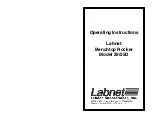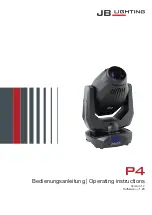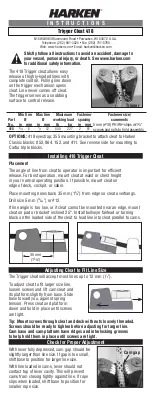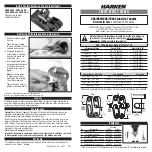
2
3. ORDER / LOOP Display Digits
These five digits display the loops that are active and in which order they occur.
For a given patch, when a digit appears under the ORDER / LOOP, that loop is
activated in the given patch. When a dash appears under the ORDER / LOOP,
that loop is bypassed in the given patch. Further, the number indicates the order
in which each loop occurs.
NOTE:
The bank / patch and loop digits described above will also display the
word “PASS” when a total system bypass is programmed into the patch. For
more information about programming the EPP400, refer to section 1 of
Application Notes
4. SUB Output Indicator
This indicator is an LED dot that is displayed after one of the loop display digits
when the SUB output has been assigned and programmed into a patch. It
indicates which loop’s SUB RCV has been assigned to the SUB output jack by
lighting up just to the right of the loop display digit corresponding to the loop
assigned to the SUB output.
NOTE:
For more information about the SUB output, refer to sections 1 and 4 of
Application Notes
5. BYPASS LED
This LED indicates when the EPP400 has been bypassed, either by programming,
by the BYPASS button (see item 21), or by one of the remote facilities. When the
EPP400 is in bypass mode, the input signal appears at both the main outputs and
the SUB output.
6. INPUT Assign LEDs
These LEDs indicate whether INPUT 1 (see item 23) or INPUT 2 (see item 24) is
selected as the unit’s input. The left LED indicates input 1 and the right LED
indicates input 2.
7. OUTPUT Assign LEDs
These LEDs indicate whether MAIN OUTPUT 1 (see item 38) or MAIN
OUTPUT 2 (see item 39) has been selected as the unit’s output. The left LED
indicates main output 1 and the right LED indicates main output 2.
8. SUB Output LED
This LED lights in the Program Mode when the SUB output is ready to be
assigned to a specific loop.
NOTE:
For more information about the SUB output, refer to sections 1 and 4 of
Application Notes
9. INPUT Assign Button
This button selects between INPUT 1 (see item 23) and INPUT 2 (see item 24).
When in Program Mode, it is used to program the desired input assignment.
Summary of Contents for EPP400
Page 1: ......
Page 2: ......
Page 3: ......
Page 4: ......
Page 5: ......
Page 8: ......
Page 12: ......
Page 23: ......
Page 24: ......
Page 25: ......
Page 26: ......
Page 27: ......
Page 28: ......
Page 29: ......
Page 30: ......
Page 31: ......
Page 32: ......
Page 33: ......
Page 34: ......
Page 35: ......
Page 36: ......
Page 37: ......








































